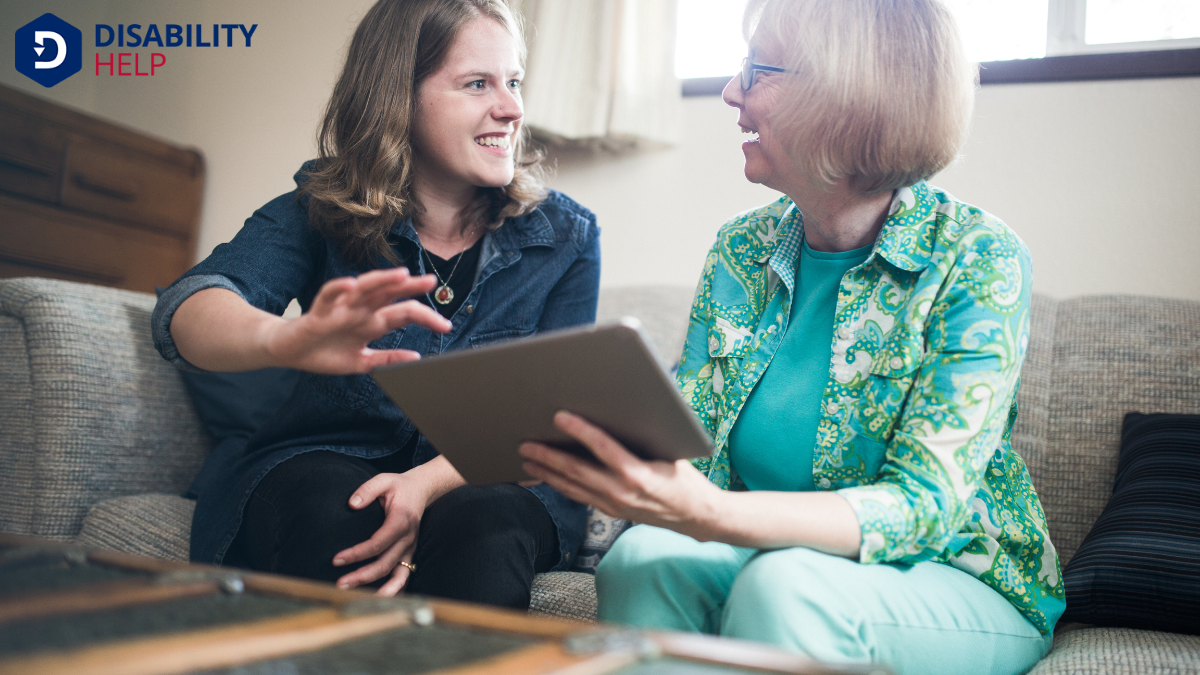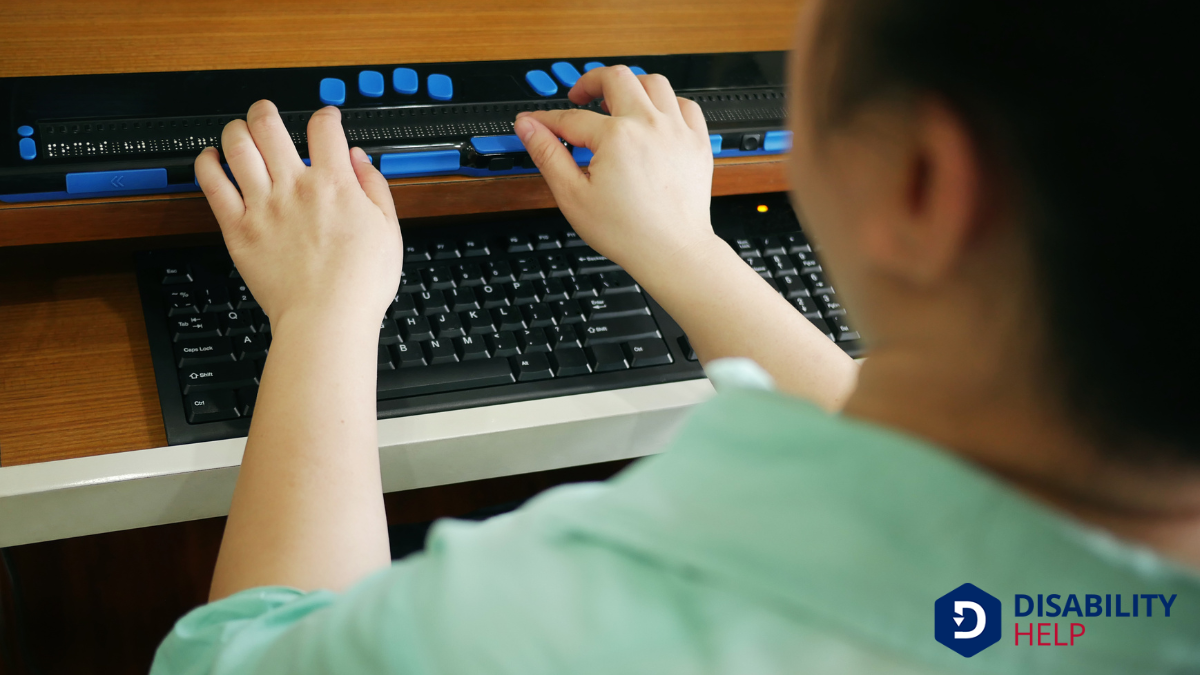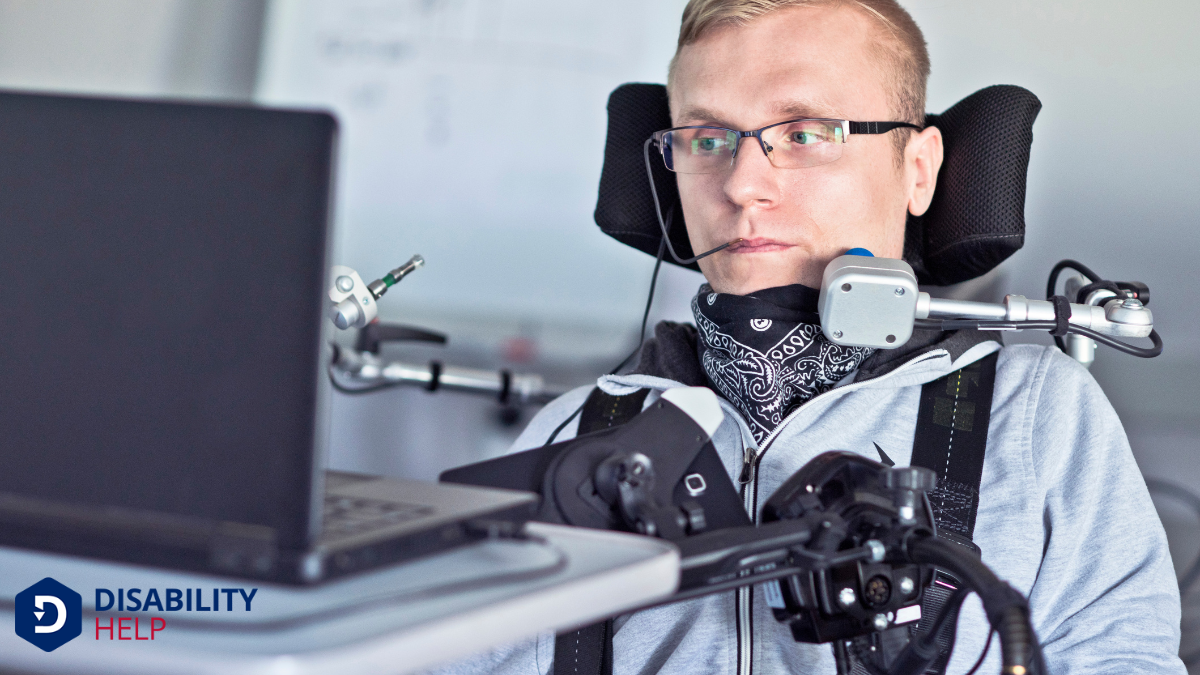When we talk about assistive devices and assistive technology, it's easy to think they're the same, but they're not. Assistive devices are physical tools like wheelchairs, while assistive technology includes digital solutions like screen readers. Both aim to support individuals with disabilities, but they do so in different ways. Curious about how these tools and technologies differ and complement each other? Let's explore their unique roles and impacts.
Key Takeaways
- Assistive devices are physical tools aiding disabilities, while assistive technology includes digital solutions enhancing accessibilityThe design of products, devices, services, or environments to be usable by people with disabilities.....
- Devices provide direct user interaction; technology adapts systems to individual needs.
- Examples of devices include wheelchairs and hearing aids; technology examples include screen readers and speech-to-text apps.
- Devices focus on enhancing functional capabilities; technology revolutionizes environmental interaction.
- Understanding these differences aids in selecting suitable support solutions for individuals with disabilities.
Defining Assistive Devices
When we talk about assistive devices, we're referring to tools or equipment designed to help individuals with disabilities perform tasks they might otherwise find challenging. These devices range widely, from simple items like canes and walkers to more complex ones like hearing aids and wheelchairs.
Their primary purpose is to enhance the functional capabilities of those who need them, making daily activities more accessible and manageable.
We understand the importance of clarity in defining assistive devices. They differ from assistive technology, which often implies digital solutions. Assistive devices focus on physical aids, offering tangible support.
By recognizing their role, we can better appreciate how they empower individuals, fostering independence and improving quality of life.
Let's explore these tools to grasp their impact effectively.
Understanding Assistive Technology

While assistive devices provide tangible support, assistive technology introduces a new dimension by leveraging digital solutions to aid individuals with disabilities. We see this technology encompassing a broad range of tools, from software applications to advanced communication systems.
These digital solutions empower users by enhancing their abilities and offering more personalized support. For instance, screen readers open up digital content to visually impaired users, while speech-to-text programs assist those with hearing difficulties.
Assistive technology isn't just about access; it revolutionizes how individuals interact with their environments. By embracing these innovations, we're not just offering help—we're ensuring people can engage more fully and independently.
As we continue to explore this field, we must stay informed about the latest advancements, ensuring everyone can benefit from these technological breakthroughs.
Key Differences Between Devices and Technology
Although both assistive devices and assistive technology aim to support individuals with disabilities, they differ fundamentally in their approach and application. Let’s break it down:
Assistive devices are tangible objects, like wheelchairs or hearing aids, that provide direct physical assistance. In contrast, assistive technology encompasses a broader range of tools, often digital or software-based, designed to enhance or adaptA grassroots disability rights organization in the U.S. that focuses on promoting community-based se... environments for better accessibility.
When we think of technology, it’s about integrating systems that tailor experiences to individual needs, like screen readers or voice recognition software. Devices are more about direct interaction, while technology often involves adapting existing systems to meet specific requirements.
Examples of Common Assistive Devices
Having clarified the distinction between assistive devices and technology, let's explore some prevalent examples of assistive devices that provide direct physical support to individuals.
These devices are designed to aid with mobility, communication, and daily tasks, enhancing the quality of life for those who use them. When discussing assistive devices, it's helpful to envision practical tools that many people rely on every day.
Here are some common examples:
- Wheelchairs: Essential for those with mobility impairments, providing independence and ease of movement.
- Canes and Walkers: Offer balance and support for individuals with limited mobility.
- Hearing Aids: Amplify sound for those with hearing lossPartial or total inability to hear sounds in one or both ears..
- Braces and ProstheticsArtificial devices that replace missing body parts, such as limbs, often used after amputations.: Assist with physical stability and functionality.
- Magnifiers and Screen Readers: Aid those with visual impairments in accessing written text.
These devices play a fundamental role in daily life.
Exploring Assistive Technology Solutions

As we explore assistive technology solutions, it's important to recognize how these innovations extend beyond simple physical aids, offering digital and electronic support that can transform daily living.
These technologies range from screen readers and voice recognition software to specialized apps that help manage daily tasks. They empower individuals by enhancing communication, providing greater access to informationThe right of individuals with disabilities to obtain and use information, often requiring accessible..., and supporting independence.
For instance, text-to-speech programs allow those with visual impairments to interact with written content effortlessly. Similarly, smart home devices can control lighting, temperature, and even kitchen appliances through voice commands, making home life more accessible.
The Role of Assistive Devices in Daily Living
While assistive technology offers incredible digital solutions, assistive devices play a vital role in enhancing daily living through tangible, physical aids.
These devices help us navigate everyday tasks with greater ease and independence. By integrating them into our routines, we can transform challenges into manageable experiences.
Let’s consider some common assistive devices that make a significant difference:
- Canes and walkers provide stability and support for those with mobility issues.
- Hearing aids amplify sound for individuals with hearing loss.
- Magnifiers enhance visual clarity for reading and other detailed tasks.
- Grab barsBars installed in bathrooms or other areas to provide support and prevent falls for those with mobil... offer safety in bathrooms and prevent falls.
- Adaptive utensils simplify eating for those with limited hand dexterity.
These devices empower us by bridging the gap between our capabilities and daily demands, improving our quality of life.
How Assistive Technology Enhances Accessibility
Let's explore how assistive technology opens doors to accessibility by using digital tools that foster inclusionThe practice of creating environments in which any individual or group can be and feel welcomed, res....
These tools help us bridge communication gaps, ensuring everyone can participate fully in our digital world.
Digital Tools for Inclusion
When it comes to leveling the playing field for individuals with disabilities, digital tools for inclusion have become indispensable.
These tools empower us to break down barriers and provide equal opportunities. They cater to diverse needs and help everyone participate fully in society.
Let’s explore some of these essential technologies:
- Screen readers: Help visually impaired individuals access digital content by converting text to speech.
- Voice recognition software: Enables hands-free control of devices, assisting those with mobility challenges.
- Text-to-speech applications: Allow users to hear written text, aiding those with reading difficulties.
- Closed captioning: Supports hearing-impaired people by displaying text on screens.
- Adaptive keyboards: Offer customizable layouts for individuals with physical impairments.
Bridging Communication Gaps
Although many barriers still exist, assistive technology has made significant strides in bridging communication gaps for individuals with disabilities. These tools empower us to connect more effectively, whether through voice recognition software, text-to-speech applications, or alternative communication devices.
For those of us experiencing speech or hearing challenges, these technologies open doors to conversations we might otherwise miss. We can now express ourselves more fully and participate in discussions that enrich our lives.
For instance, speech-generating devices allow users to articulate thoughts and engage with others seamlessly. As a community, we benefit from these innovations by fostering inclusivity and understanding.
Let’s continue to embrace and develop these technologies, ensuring everyone has a voice in our evolving digital world.
Choosing the Right Support for Your Needs

How do we determine the best support for our unique needs? Choosing the right assistive device or technology involves understanding our specific challenges and goals.
We need to assess our situation carefully and consider the following:
- Identify Needs: What tasks do we struggle with in daily life?
- Research Options: Are there technologies that address these specific challenges?
- Consult Experts: Can healthcare professionals provide insights or recommendations?
- Try Before Buying: Is there a trial period to guarantee the device or technology fits our needs?
- Consider Future Needs: Will this support remain relevant as our needs evolve?
Conclusion
In understanding assistive devices and technology, we've seen how each plays a crucial role in enhancing the lives of individuals with disabilities. Devices offer immediate physical support, like mobility and communication aids, while technology provides adaptable solutions, promoting independence and accessibility. When choosing the right support, let's consider personal needs and preferences. Together, these tools empower individuals, fostering a more inclusive environment where everyone can thrive. We hope this guide helps you make informed decisions.






